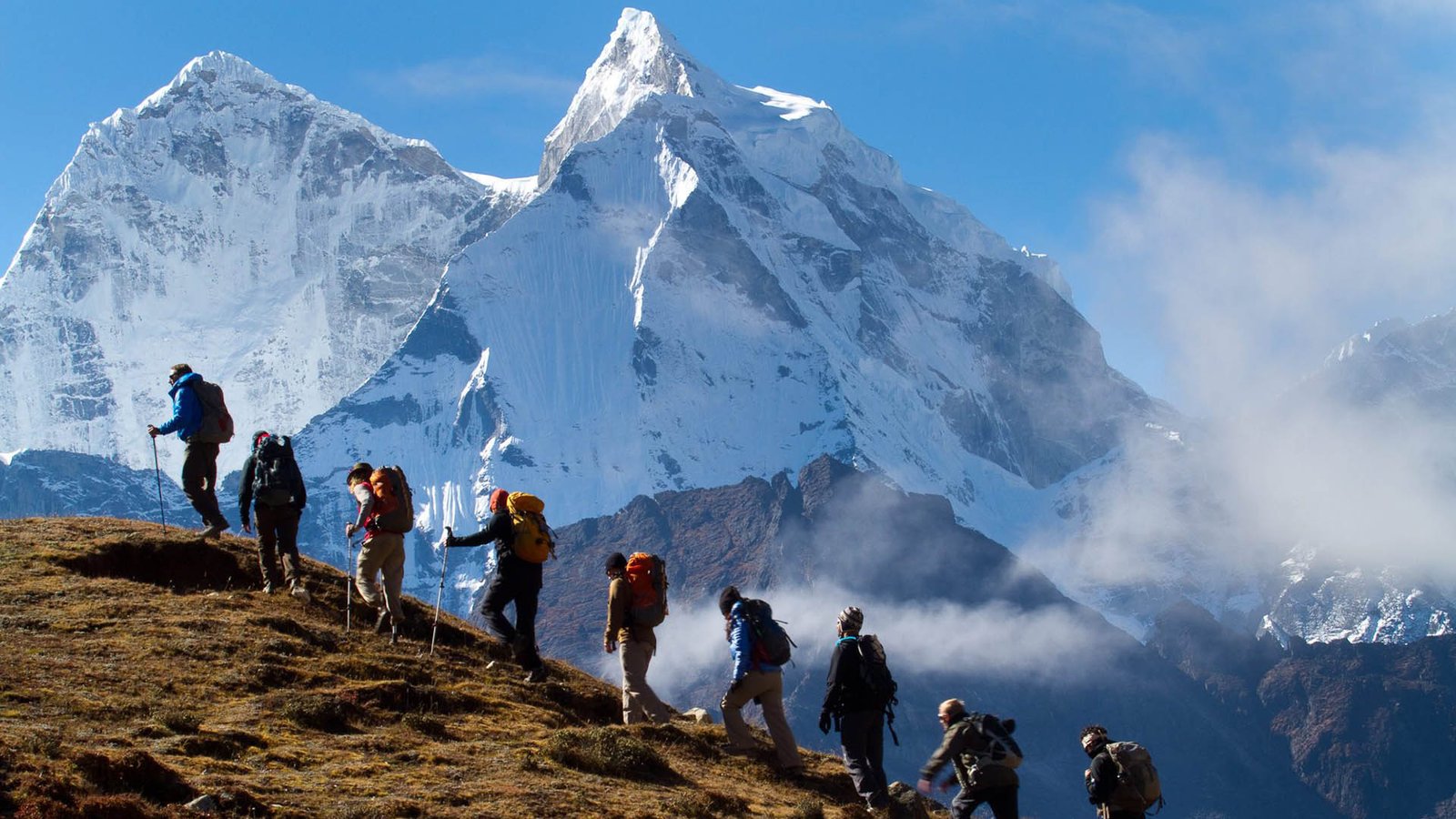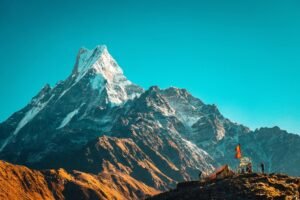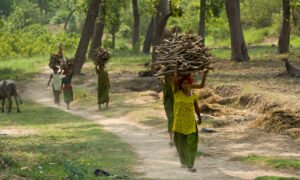High-altitude trekking offers breathtaking vistas and a unique sense of adventure but requires thorough preparation to ensure a safe and enjoyable experience. The combination of challenging terrain, thin air, and potentially harsh weather conditions demands physical fitness, proper gear, and knowledge about acclimatization and safety measures. This article provides a comprehensive guide on how to prepare for a high-altitude trek, covering physical conditioning, equipment, nutrition, acclimatization, and safety tips.
Understanding High-Altitude Trekking
High-altitude trekking generally refers to hikes at elevations above 8,000 feet (2,438 meters). At these altitudes, the reduced oxygen levels can significantly affect physical performance and health. Common trekking destinations such as the Himalayas, the Andes, and the Rockies often involve altitudes ranging from 8,000 to 18,000 feet (2,438 to 5,486 meters).
Key challenges of high-altitude trekking include:
- Hypoxia: Reduced oxygen availability can lead to acute mountain sickness (AMS) and more severe conditions like high-altitude pulmonary edema (HAPE) and high-altitude cerebral edema (HACE).
- Weather: Rapidly changing weather conditions can bring extreme cold, wind, and precipitation.
- Terrain: Difficult and varied terrain requires good physical conditioning and balance.
Physical Conditioning
Preparing your body for the physical demands of high-altitude trekking is essential. A well-rounded fitness regimen should focus on cardiovascular endurance, strength, flexibility, and balance.
- Cardiovascular Training
Cardiovascular fitness is crucial for enduring long days of hiking at high altitudes. Recommended activities include:
- Running: Incorporate interval training to improve aerobic capacity and stamina.
- Cycling: Both road biking and mountain biking are excellent for building endurance.
- Swimming: Provides a full-body workout and improves lung capacity.
- Stair Climbing: Use stair machines or find long flights of stairs to simulate uphill trekking.
Aim for at least 30-45 minutes of cardiovascular exercise, 4-5 times a week, gradually increasing the intensity and duration as your fitness improves.
- Strength Training
Strength training focuses on building the muscles needed for carrying a backpack and navigating rough terrain. Key areas to target include:
- Legs: Squats, lunges, and step-ups improve leg strength and endurance.
- Core: Planks, Russian twists, and leg raises enhance core stability, crucial for balance.
- Upper Body: Push-ups, pull-ups, and shoulder presses help with carrying gear and using trekking poles.
Incorporate strength training exercises 2-3 times a week, with a mix of bodyweight exercises and weightlifting.
- Flexibility and Balance
Flexibility and balance exercises help prevent injuries and improve agility on uneven terrain. Recommended practices include:
- Yoga: Enhances flexibility, balance, and mental focus.
- Pilates: Strengthens core muscles and improves overall stability.
- Dynamic Stretching: Incorporate before workouts to prepare muscles for physical activity.
- Static Stretching: Use after workouts to improve flexibility and reduce muscle soreness.
Integrate flexibility and balance exercises into your routine 2-3 times a week.
Acclimatization
Proper acclimatization is vital to reduce the risk of altitude sickness. The body needs time to adapt to lower oxygen levels at higher altitudes.
- Gradual Ascent
Ascend gradually to allow your body to acclimatize:
- Spend time at intermediate altitudes: Before reaching your final destination, spend a few days at mid-altitudes (8,000-10,000 feet) to adjust.
- Follow the rule: “Climb high, sleep low.” Hike to higher altitudes during the day but return to a lower altitude to sleep.
- Stay Hydrated
Dehydration can exacerbate altitude sickness:
- Drink plenty of fluids: Aim for 3-4 liters of water daily. Avoid alcohol and caffeine as they can dehydrate you.
- Monitor urine color: Clear or light yellow urine indicates good hydration.
- Medications
Certain medications can aid acclimatization:
- Acetazolamide (Diamox): Helps prevent and reduce symptoms of AMS. Consult with a healthcare provider before using it.
- Dexamethasone: A steroid that can be used in severe cases of altitude sickness under medical supervision.
- Rest and Nutrition
Adequate rest and proper nutrition support acclimatization:
- Rest days: Incorporate rest days into your itinerary to allow your body to adjust.
- Balanced diet: Focus on high-carbohydrate meals, which provide the energy needed for trekking at high altitudes.
Essential Gear and Equipment
Having the right gear is crucial for comfort and safety during a high-altitude trek. Here’s a checklist of essential items:
- Clothing
Layering is key to managing varying temperatures and conditions:
- Base Layer: Moisture-wicking materials like merino wool or synthetic fabrics.
- Insulating Layer: Fleece or down jacket for warmth.
- Outer Layer: Waterproof and windproof shell jacket and pants.
- Additional Items: Thermal underwear, gloves, hat, buff or neck gaiter, and warm socks.
- Footwear
Proper footwear prevents blisters and provides support:
- Hiking Boots: Waterproof, well-fitted, and broken-in before the trek.
- Gaiters: Protect against debris and moisture.
- Camp Shoes: Lightweight shoes for comfort in camp.
- Backpack
A comfortable, well-fitted backpack is essential:
- Daypack: 20-30 liters for day trips.
- Trekking Backpack: 50-70 liters for multi-day treks.
- Sleeping Gear
Ensuring a good night’s sleep is crucial for recovery:
- Sleeping Bag: Rated for the coldest expected temperatures.
- Sleeping Pad: Provides insulation and comfort.
- Navigation and Safety
Staying safe and on track requires reliable navigation tools:
- Maps and Compass: Always carry a physical map and compass as a backup.
- GPS Device: Handy for precise navigation.
- Headlamp: With extra batteries for visibility in low light.
- First Aid Kit: Include altitude sickness medication, bandages, antiseptic, and pain relief.
- Trekking Poles
Trekking poles reduce strain on your joints and improve stability on uneven terrain. Adjustable poles are ideal for varying trail conditions.
- Food and Cooking Gear
Sustaining your energy levels requires nutritious food:
- High-Calorie Snacks: Nuts, dried fruits, energy bars.
- Lightweight Stove: For cooking meals.
- Water Purification: Tablets, filters, or UV purifiers.
Nutrition and Hydration
Maintaining energy and hydration is critical at high altitudes. Here’s how to ensure you’re properly fueled:
- Balanced Diet
Focus on a diet rich in carbohydrates, proteins, and fats:
- Carbohydrates: Provide quick energy. Include pasta, rice, and potatoes.
- Proteins: Support muscle repair and recovery. Include lean meats, beans, and nuts.
- Fats: Provide sustained energy. Include avocados, cheese, and nuts.
- Regular Meals
Eat regular meals to keep energy levels stable:
- Breakfast: Start with a high-energy meal such as oatmeal with nuts and dried fruits.
- Lunch: Keep it light and easy to digest, like sandwiches or wraps.
- Dinner: A hearty meal with a balance of carbs and protein.
- Snacks
Frequent snacking helps maintain energy levels:
- Trail Mix: A mix of nuts, seeds, and dried fruits.
- Energy Bars: Compact and high in calories.
- Chocolate: Provides quick energy and a morale boost.
- Hydration
Hydration is crucial, especially in dry, high-altitude environments:
- Water: Aim to drink at least 3-4 liters a day.
- Electrolytes: Use electrolyte tablets or drinks to replenish lost salts.
- Hot Drinks: Warm beverages like tea or hot chocolate can help maintain body temperature and hydration.
Safety Tips and Emergency Procedures
Safety is paramount in high-altitude trekking. Being prepared for emergencies can make the difference between a minor issue and a serious situation.
- Altitude Sickness
Recognize and respond to symptoms of altitude sickness:
- Mild AMS: Headache, nausea, dizziness, fatigue. Rest, hydrate, and descend if symptoms persist.
- HAPE: Shortness of breath, coughing, chest congestion. Descend immediately and seek medical help.
- HACE: Confusion, lack of coordination, hallucinations. Immediate descent and medical treatment are crucial.
- Weather Awareness
Monitor weather conditions and be prepared for sudden changes:
- Check Forecasts: Regularly check weather forecasts for the region.
- Be Prepared: Carry extra layers and emergency shelter.
- Communication
Ensure you can communicate in case of emergency:
- Satellite Phone: Reliable in remote areas.
- Emergency Beacon: Devices like SPOT or Garmin inReach can send SOS signals.
- Group Travel
Trekking in a group enhances safety:
- Stay Together: Avoid splitting up, especially in bad weather or difficult terrain.
- Share Information: Keep everyone informed about the route, schedule, and contingency plans.
- Local Knowledge
Utilize local guides and knowledge:
- Hire Guides: Local guides are familiar with the terrain and weather patterns.
- Respect Local Advice: Listen to locals’ advice on conditions and risks.
Mental Preparation
Mental resilience is as important as physical preparation. Trekking at high altitudes can be mentally challenging due to isolation, fatigue, and adverse conditions.
- Stay Positive
Maintain a positive attitude and stay motivated:
- Set Small Goals: Break the trek into manageable sections.
- Celebrate Milestones: Acknowledge progress and achievements.
- Stress Management
Manage stress through relaxation techniques:
- Breathing Exercises: Deep breathing can reduce anxiety and improve oxygen intake.
- Meditation: Helps maintain mental focus and calmness.
- Preparation and Confidence
Confidence comes from thorough preparation:
- Know Your Limits: Be aware of your physical and mental limits and respect them.
- Plan and Prepare: Detailed planning reduces uncertainty and stress.
Conclusion
Preparing for a high-altitude trek requires a comprehensive approach that combines physical conditioning, proper gear, nutrition, acclimatization, and safety measures. By investing time and effort into thorough preparation, you can significantly enhance your chances of a successful and enjoyable trek. Remember that each trek is unique, so tailor your preparation to the specific challenges and conditions of your chosen destination. With the right preparation, you can safely explore the majestic heights of the world’s most breathtaking mountain ranges and create unforgettable memories.





